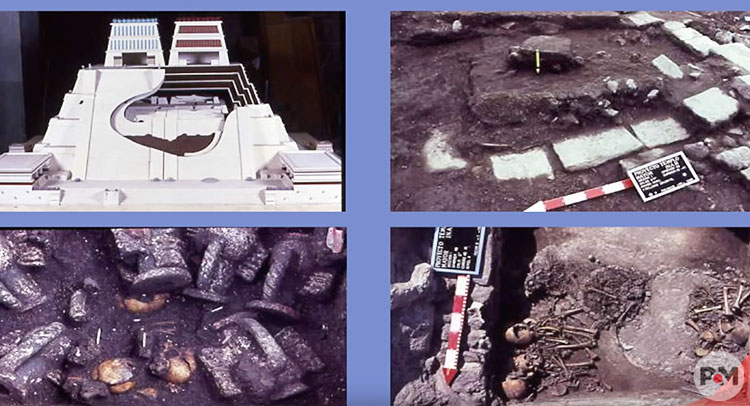Experts analyze bones of Tlatelolco and the Sacred Precinct of Mexico-Tenochtitlán…
EXPERTS OF THE NATIONAL INSTITUTE OF ANTHROPOLOGY AND HISTORY (INAH) analyzed a group of 88 individuals sacrificed more than 500 years ago, of which the DNA of 46 bones revealed that they were mostly infants and children.
It was established that the remains found in Tlatelolco and in the Sacred Precinct of Mexico-Tenochtitlán belonged mostly to male and acted as representations of the mythical tlaloque, described as small figures of the Mexica worldview.
They had the mission to assist Tláloc during the rainy events and were ritually personified by children between two and nine years of age at the time of death, a statement said.
Although the aforementioned vestiges were discovered between 1980 and 1990, DNA studies were recently carried out as part of a project coordinated by the physical anthropologist attached to the Templo Mayor Museum (MTM), Juan Alberto Román Berrelleza.
“DNA is a molecule very sensitive to degradation. Only one hour after death it begins to deteriorate due to lack of oxygenation. Finding old samples for that reason is a real lottery,” he said.
The person in charge of the investigation clarified that the bones analyzed belong to three different contexts, which share the association to aquatic elements, as well as comales and remains of birds.
At Offering 48 of the Templo Mayor, there are 42 individuals found inside a stone box northwest of the Sacred Precinct of Tenochtitlan; 43 infants from the stairway of the first temple of Ehécatl-Quetzalcóatl de Tlatelolco; and three other bodies were located 7.5 meters below the Metropolitan Cathedral.
Román Berrelleza mentioned that the gene selected for these experiments was that of amelogenin; which is coded in the human body to enamel the teeth and that even at early ages contains the necessary differences to identify the sex of the individuals.
He concluded that this research, still in development, proves the transcendence that multidiscipline has within archaeological work; It also requires support in disciplines such as history, physical anthropology and genetics.
He added that other applications for the analysis of ancient skeletal remains are related to the knowledge of biological variables (age, height), pathologies (traces of diseases), probable causes of death, post-mortem treatments, diets or residence patterns of the ancient inhabitants of the Mesoamerican territory.
Text and photo: El Universal










